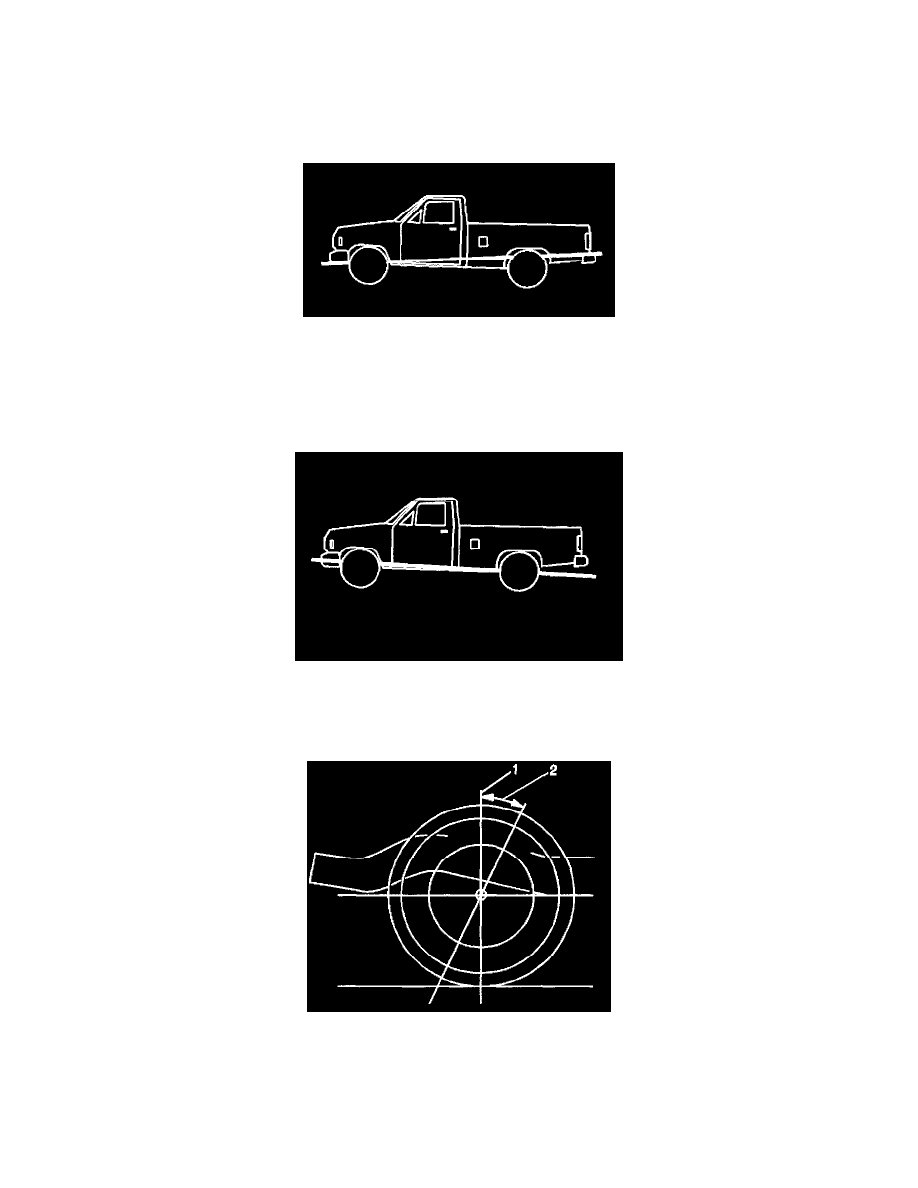K 2500 Truck 4WD V8-6.6L DSL Turbo VIN 1 (2002)

Alignment: Service and Repair
Front Wheel Alignment
Front Caster and Camber Adjustment
Front Caster and Camber Adjustment
Frame angle is positive when higher in the rear.
1. Determine if the vehicle is relative to frame or relative to ground. If caster is relative to frame, the caster values must be compensated for the
measured frame angle. To determine the frame angle use a digital protractor or equivalent.
2. Frame angle is positive when higher in the rear. Measure both sides of the frame and take an average from those measurements. Then add the
average frame angle to the caster reading obtained in step 5 of this procedure when making adjustments.
Frame angle is negative when lower in the rear.
3. Frame angle is negative when lower in the rear. Measure both sides of the frame and take an average from the measurements. Then subtract the
average frame angle from the caster reading obtained in step 5 of this procedure when making adjustments.
4. The caster and camber adjustments are made by rotating the offset cam bolt and the cam in the slotted frame bracket in order to reposition the
control arm.
Important: Before adjusting the caster and camber angles, jounce the front bumper three times to allow the vehicle to return to normal height.
Measure and adjust the caster and the camber with the vehicle at curb height. The front suspension Z dimension is indicated in Trim Heights.
5. For an accurate reading, do not push or pull on the tires during the alignment process.
